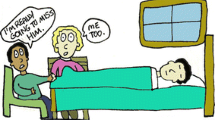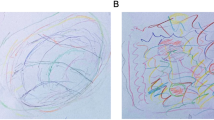Abstract
Effective doctor patient relationships are predicated on doctors' relational engagement and affective/holistic communication with the patients. On the contrary, the contemporary healthcare and patient-clinician communication are at odds with the desirable professional goals, often resulting in dehumanization and demoralization of patients. Besides denigrating the moral agency of a patient such apathetic interactions and unprofessional approach also affect the treatment and well-being of the sufferer. Foregrounding multifaceted doctor-patient relationships, graphic pathographies are a significant cultural resource which recreate the embodied moment of clinical encounters as they also lay bare qualitative tensions between patient' illness experience with doctor's professional understanding of the same. Taking these cues, the present article drawing theoretical postulates of Rita Charon, Deborah Lupton, and Havi Carel close reads Peter Dunlap-Shohl's My Degeneration: A Journey Through Parkinson's (2015), Brian Fies' Mom's Cancer (2006), and Stan Mack's Janet & Me: An Illustrated Story of Love and Loss (2004) to investigate the nature of doctor-patient relationship vis-à-vis communication and the implications of bad doctoring/communicative practices on patient identity and emotions. Furthermore, the article also examines the aesthetic and functional role of comics in bringing into relief the graphically mediated doctor-patient relationship.




Similar content being viewed by others
References
Anderson, Patricia F., Elise Wescom, and Ruth Carlos. 2016. “Difficult Doctors, Difficult Patients: Building Empathy.” Journal of the American College of Radiology 13 (12): 1590-1598
Attardo, Salvatore, ed. 2014. Encyclopedia of Humor Studies. California: SAGE.
Baur, Vivianne, Tineke Abma, and Ingrid Baart. 2014. ““I Stand Alone:” An Ethnodrama About the (dis)Connections Between a Client and Professionals in a Residential Care Home.” Healthcare Analysis 22 (3): 272-291.
Beauchamp, Tom L., and James F. Childress. 2001. Principles of Biomedical Ethics. 5thed. New York: Oxford University Press.
Beckman, Howard B., Kathryn M. Markakis, Anthony L. Suchman, and Richard M. Frankel. 1994.“The Doctor-Patient Relationship and Malpractice: Lessons from Plaintiff Depositions.” Archives of Internal Medicine 154 (12): 1365-1370.
Carel, Havi. 2016. Phenemenology of Illness. Oxford: Oxford University Press.
Charon, Rita. 2006. Narrative Medicine: Honoring the Stories of Illness. Oxford: Oxford University Press.
Conley, Daniella. 2017. “Literature and Medicine: An Examination of the Patient-Physician Relationship through a Survey of Fiction and Poetry.” English Honours Capstone Papers. Dalhousie University. Online Publication. https://dalspace.library.dal.ca/bitstream/handle/10222/72731/Conley%2c%20Literature%20and%20Medicine.pdf?sequence=2&isAllowed=y.
Czerwiec, M.K, Ian Williams, Susan Merrill Squier, Michael J. Green, Kimberly R. Myers, and Scott T. Smith. 2015. Graphic Medicine Manifesto. Pennsylvania: The Pennsylvania State University Press.
Diedrich, Lisa. 2007. Treatments: Language, Politics, and Culture of Illness. London: University of Minnesota Press.
Dunlap-Shohl, Peter. 2015. My Degeneration: A Journey Through Parkinson’s. Pennsylvania: The Pennsylvania State University Press.
Eisner, Will. 2008. Graphic Storytelling and Visual Narrative. New York: W.W Norton.
Emanuel, Ezekiel J., and Linda L. Emanuel. 1992. “Four Models of the Physician-patient Relationship.” JAMA 267 (16): 5-13.
Fies, Brian. 2006. Mom’s Cancer. New York: AbramsComicarts.
Frank, Arthur. 2007. “The Negative Privilege of Women’s Illness Narratives.” In Stories of Illness and Healing: Women Write Their Bodies, edited by Sayantani Das Gupta and Marsha Hurst, 67-73. Ohio: The Kent State University Press.
Fricker, Miranda. 2007. Epistemic Injustice: Power and the Ethics of Knowing. Oxford: Oxford University Press.
Garden, Rebecca. 2007. “The Problem of Empathy: Medicine and the Humanities.” New Literary History 38 (3): 551-567.
Gardner, Jared. 2015. “Show Me Where It Hurts: Part 1.” Public Books. 17 Nov. Accessed 20 Nov. 2015. http://www.publicbooks.org/show-me-where-it-hurts-part-1/.
Glazer, Sarah. 2015. “Graphic Medicine: Comics Turn a Critical Eye on Health Care.” Hastings Center Report 45 (3): 15-19.
Grant, Daniel. 2017. “We the Doctors of Tomorrow need to Stop Failing our Patients and Ourselves.” The BMJ Opinion. 25 May. Accessed 23 Aug. 2017. https://blogs.bmj.com/bmj/2017/05/25/doctors-of-tomorrow-need-to-stop-failing-our-patients-and-ourselves/.
Green, Michael J. and M.K. Czerwiec. 2016. “Graphic Medicine: Best of 2016.” JAMA 316 (24): 2580-2581.
Ha, Jennifer Fong, Dip SurgAnat, and Nancy Longnecker. 2010. “Doctor-Patient Communication: A Review.” The Ochsner Journal 10 (1): 38-43.
Kasthuri, Raghavi Ravi and Sathyaraj Venkatesan. 2015. “Picturing Illness: History, Poetics, and Graphic Medicine.” Research & Humanities in Medical Education 2: 11-17. Accessed 24 May 2017. https://www.rhime.in/ojs/index.php/rhime/article/view/9.
Knight, Paula. 2017. The Facts of Life. Hove: Myriad.
Limon, Dror and Salomon M Stemmer. 2015. “Doctor-patient Hierarchy may have a Therapeutic Role.” BMJ 351. 23 Dec. Accessed 26 May 2017. https://doi.org/10.1136/bmj.h6906.
Lupton, Deborah. 2003. Medicine as Culture: Illness, Disease and the Body in Western Societies. 2nd ed. London: Sage.
Mack, Stan. 2004. Janet & Me: An Illustrated Story of Love and Loss. New York: Simon & Schuster.
Marchetto, Maria A. 2006. Cancer Vixen: A True Story. New York: Alfred A Knopf.
McCloud, Scott. 1994. Understanding Comics: The Invisible Art. New York: Harper Perennial.
McNicol, Sarah. 2014. “Humanising Illness: Presenting Health Information in Educational Comics.” Medical Humanitities 40 (1): 49-55.
Mendoza, Michael D., Sandy G. Smith, Milton “Mickey” Eder, and John Hickner. 2011. “The Seventh Element of Quality: The Doctor-Patient Relationship.” Family Medicine 43 (2): 83-89.
O’Brien, Sharon. 2013. “Showing the Voice of the Body: Brian Fies’s Mom’s Cancer, the Graphic Illness Memoir, and the Narrative of Hope.” In Drawing from Life: Memory and Subjectivity in Comic Art, edited by Jane Tolmie, 264-287. Jackson: University Press of Mississippi.
Spence, Des. 2012. “What Happened to the Doctor-patient Relationship?” BMJ 344:1.
Stewart Moira A. 1995. “Effective Physician-patient Communication and Health Outcomes: A Review.” CMAJ: Canadian Medical Association Journal 152 (9): 1423.
Venkatesan, Sathyaraj. 2015. “Graphic Medicine Manifesto, by M. K. Czerwiec, Ian Williams, Susan Merrill Squier, Michael J. Green, Kimberly R. Myers, and Scott T. Smith.” Journal of Graphic Novels and Comics 7 (1): 93-94.
Williams, Ian C.M. 2012. “Graphic Medicine: Comics as Medical Narrative.” Medical Humanities 38 (1): 21-27.
Acknowledgements
We would like to thank Stan Mack, Brian Fies and Peter Dunlap-Shohl for their many helpful comments and insights on earlier drafts of this article. They generously contributed through their prompt email responses.
Author information
Authors and Affiliations
Corresponding author
Ethics declarations
Endnotes
1 The 1960s underground comix artists like Robert Crumb, Aline-Komisky Crumb, Justin Green and others made use of this mode of subversion which not only reoriented graphic narration but also introduced novel and significant forms of confessional narratives in comics. In so doing, they refashioned attitudes towards the marginalized and underprivileged in society. To a certain extent, graphic pathographies also utilize modes of humour (such as irony, pun, sarcasm) in order to challenge the assumed infallible status and unquestioned roles of the doctors in an institutionalized setting. (See Kasthuri and Venkatesan 2015).
2 Havi Carel (2016) borrows the term “epistemic injustice” from the philosopher Miranda Fricker to refer to the injustice caused by “biases and negative stereotypes about illness that can lead interlocuters to treat ill persons’ reports with unwarranted disbelief or dismissiveness” (180). Carel investigates the epistemic dimensions in doctor-patient interactions and provides phenemenological toolkit which addresses the epistemic injustice in illness. See chapter eight, “Epistemic Injustice in Healthcare” in Carel’s Phenemenology of Illness.
3 According to Pierrie Bourdieu, symbolic violence is “instituted through the adherence that the dominated cannot fail to grant the dominant.. .the embodiment of the—thereby naturalized—classifications of which her social being is the product.” See Arthur Frank’s “The Negative Privilege of Women’s Illness Narratives.”
Rights and permissions
About this article
Cite this article
Venkatesan, S., Saji, S. (Un)bridgeable Chasms?: Doctor-Patient Interactions in Select Graphic Medical Narratives. J Med Humanit 40, 591–605 (2019). https://doi.org/10.1007/s10912-018-9528-y
Published:
Issue Date:
DOI: https://doi.org/10.1007/s10912-018-9528-y




